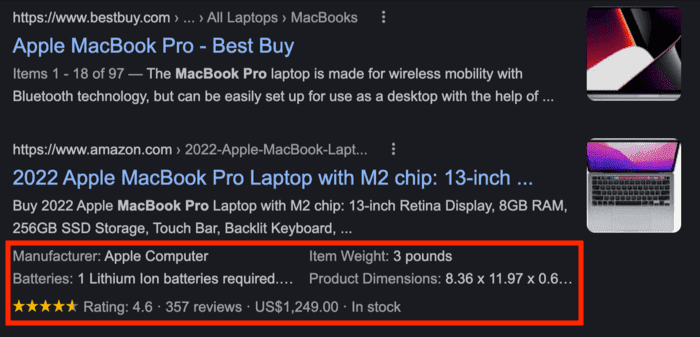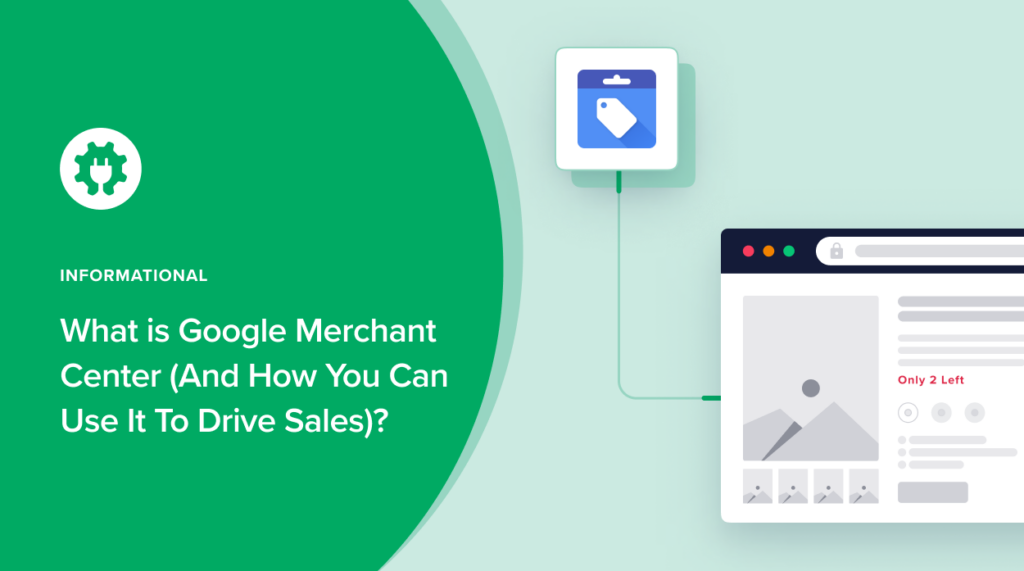What is Google Merchant Center, and what is all the hype around it?
When it comes to selling products online, the competition is very stiff. That’s why you need to use every tool at your disposal. And this is where Google Merchant Center comes in.
In this article, we’ll explain what Google Merchant Center is and why it’s important for ecommerce store owners.
In This Article
What is Google Merchant Center?
Google Merchant Center (GMC) is a digital marketing platform created by Google to help ecommerce businesses manage how their in-store and online product inventory appears on Google search results. It also determines how they look across all other Google products, like Google Shopping, YouTube, e.t.c.
Google created the Merchant Center to help users create product rich snippets that are more attractive and interactive. This helps your search listings stand out and generate more sales.
With Google Merchant Center, you can upload product information that helps you attract shoppers. This includes information such as:
- Product images
- Product reviews
- Shipping information
- Pricing
- Product attributes
- And more.
This vital information can be displayed in product rich snippets, helping you improve your clickthrough rates (CTRs).
You can also connect your GMC account to other Google services like Google Analytics for tracking. Plus, you can use it to help you create and run Google Ads (formerly known as Google AdWords) campaigns, Google Shopping campaigns, remarketing campaigns, and so much more.
If you run a brick-and-mortar business, you can also provide data to power local inventory ads.
Is Google Merchant Center Account Free?
Setting up Google Merchant Center is 100% free. All you need is a Gmail or Google Business Profile (formerly Google My Business) account. You also need to have a secure checkout process on your website.
To create your Google Merchant account, go to the Merchant Center website, click the Get Started button, and fill in your business information.

Once that is done, you can submit your Google Shopping feed, which is all the product information for your inventory. This is where Google pulls the product data it displays in rich snippets.
Make sure to update your Google Merchant Center feed (product data feed) regularly to ensure your rich snippets always display accurate data. This helps shoppers easily discover your inventory, as your online product feed will be more interactive and attractive.
How to Implement Google Merchant Center Listing Schema in WordPress
Merchant listing schema provides results in search snippets with more product details, leading to greater engagement and interaction on search engine result pages (SERPs).
While this feature used to be exclusively reserved for ecommerce sites with a GMC account, that’s no longer the case.
With AIOSEO, you can now benefit from the Merchant Center listing schema too. The best part? You don’t even need a GMC account to do so!
Here’s a simple walkthrough of how to do that:
Step 1: Install and Activate AIOSEO
The first step to implementing the GMC listing schema is to install and activate All in One SEO (AIOSEO).

AIOSEO is a powerful yet easy-to-use SEO plugin that has been downloaded over 100 million times. Millions of marketers and smart website owners use the plugin to help them boost their search engine rankings and drive qualified traffic to their sites.
That’s because AIOSEO has many powerful SEO features and modules to help you properly configure your SEO settings.
One such feature is our next-gen Schema Generator. This is a powerful module that enables you to add any type of schema markup to your pages or posts.
For step-by-step instructions on how to install AIOSEO, check our detailed installation guide.
Step 2: Add Product Schema
Once you’ve installed and activated AIOSEO, the next step to adding GMC listing schema is to add product schema to your page.
The Product schema module supports GMC listing schema, making it easy for anyone who sells products on their WordPress website to take advantage of powerful enhanced search snippets.
To add product schema markup to your page, you must first open the page in editor mode. Next, scroll down to the AIOSEO Settings » Schema.

If the default schema type on that page is not set to Product schema, click on the Schema Generator button. Doing so will open up the Schema Catalog, from which you can select and add product schema markup.
Check out this step-by-step guide for detailed instructions on adding Google Merchant Center listing schema to WordPress.
Note: GMC listing schema is code that works on the backend of your site to give search engines more information about your page. This helps them generate more detailed rich snippets.
4 Ways Google Merchant Center Listing Schema Helps You Drive Sales
With All In One SEO (AIOSEO), you can now benefit from the GMC listing schema and all its benefits. Here are some of the ways this powerful feature can help you drive sales and grow your business:
Boost Your Visibility on SERPs with Product Knowledge Panels
Product knowledge graphs are a powerful feature on SERPs that give shoppers detailed information about your product. Additionally, because product knowledge graphs occupy a prominent place on SERPs, they drive a lot of engagement.

Merchant Listing schema is a key ingredient Google uses to gather the information it uses to generate knowledge graphs of your products.
With products displayed this way, business growth via brand awareness and sales becomes much easier.
Increase Organic CTR with Product Attributes
Increasing CTRs is essential to driving more sales. And this is exactly what GMC listing schema can help you do. One reason is that it allows you to add product attributes to your snippets. Examples of product attributes you can add include material, colors, size, and energy rating, among others.

Adding product attributes to your schema markup makes your search listings more attractive and interactive. By adding as much information as possible about a specific product, shoppers can see directly in SERPs whether your product is what they’re looking for. As a result, shoppers are more likely to click on your listing.

In the screenshot above, while the Best Buy listing may rank higher than Amazon, chances are Amazon gets more clicks. This is because the Amazon listing includes important product attributes such as the user rating, reviews, product price and stock availability.
Boost Your Conversions with Shipping Information
Shipping is a critical component of running an online retail business that sells physical products.
Because of this, adding shipping details to your rich snippets greatly encourages users to click. And this is exactly what the Merchant Center listing schema helps you do.

You can add as many shipping destinations as you support. Plus, if you offer free shipping, you can add this and use it to attract more customers and boost conversions.
And if you use WooCommerce as your WordPress ecommerce platform of choice, you’ll be glad to know AIOSEO supports WooCommerce shipping out of the box! This means fewer changes you need to make.
Drive Sales By Promoting Popular Products Right on SERPs
Promoting popular products is a powerful conversion rate optimization strategy used by ecommerce stores. No one wants to miss out on popular trends around their favorite products.
This is another reason to implement GMC listing schema on your product pages.
According to Google, adding GMC listing schema can result in your product being listed among the popular products ranking for that search term, particularly in Google Shopping ads. Here’s an example, from Google, of what your search listings could look like:

This increases your visibility on SERPs and makes the shopping experience easier and more fun for potential customers, leading to more sales for you.
As you can see, tapping into Google Merchant Center’s search marketing power can give your business a lot of momentum.
Get Noticed and Grow Your Business with Google Merchant Center Listing Schema
Having a strong online presence is crucial to growing your ecommerce business. However, to build that strong online presence, you must ensure that your product pages and other content are easily discoverable on search engines.
This is why you must implement the Google Merchant Center listing schema on your site.
Doing so will help you improve your visibility on SERPs, boost your organic CTRs, and drive sales for your online store. It’s also invaluable for your PPC campaigns as you can connect it to your Google Ads account.
We hope this article has helped you learn what Google Merchant Center is and why the schema markup is important to your business. You can also check out other helpful articles on our site, like our guide on boosting your SEO with schema markup or how to add product rich snippets in WordPress.
If you found this article helpful, then please subscribe to our YouTube Channel. You’ll find many more helpful tutorials there. You can also follow us on Twitter, LinkedIn, or Facebook to stay in the loop.
Disclosure: Our content is reader-supported. This means if you click on some of our links, then we may earn a commission. We only recommend products that we believe will add value to our readers.

